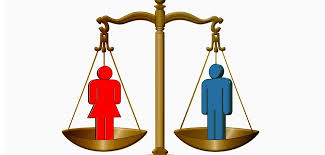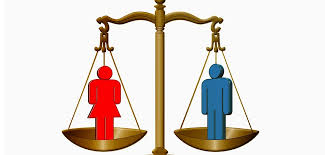
A report from the McKinsey Global Institute states that getting more women into the workforce could give the global economy a significant boost apart from conforming to the moral and social considerations of gender equality.
Global annual GDP could rise by as much as $28 trillion or 26%, by 2025 which would almost be equal to the combined economies of China and the U.S. of the present day if the women are play an equal role to men in labour markets in the so-called full-potential scenario. This was the outcome of the report that was prepared by the business and economic research arm of consulting firm McKinsey & Co.
While admitting that in the short term it was unrealistic to think about achieving gender equality, the report states that if countries were to match the progress toward gender parity of the best performer in their region annual global GDP could rise by as much as $12 trillion in 2025, double the likely growth contributed by female workers if nothing changes, and equivalent to the combined current GDP of Japan, Germany and the U.K.
The report identifies the countries that could usher in the change. The report identifies Singapore in East and Southeast Asia which is narrowing the gender gap in labour participation by 1.1% a year for men and women of prime working age while Spain in Western Europe and Chile in Latin America have been identified s the other countries that are striving to increase gender equality.
15 gender equality indicators in 95 countries formed the basis of the report. The countries that were chosen generate 97% of global GDP and account for 93% of the world’s female population.
Based on the indicators that cover areas such as work, economic opportunity, legal and political protection and physical security, the report concluded extremely high or high levels of inequality based on the indicators were present in forty of 95 countries that were considered form the report.
Even as the women in the 95 countries considered accounts for half of the world’s working-age population, the women in these countries is able to generate just 37% of global GDP in the present day. However the report also indicates that there are large variations among various regions.
For example, 17% of the country’s annual output is generated by women in India, 18% of the output in the Middle East and North Africa, 24% in South Asia- excluding India, and 34% of the national output is contributed by the women in East and Southeast Asia - excluding China.
“Gender gaps are not something a country grows out of as it gets more developed,” says Anu Madgavkar, senior fellow at MGI.
The report notes that the efforts to gain gender equality is far higher in Sub-Saharan Africa than it is in South Asia, India and the Middle East and North Africa regions despite the fact that the later regions have a much higher higher per-capita income and annual growth rate.
(Source:www.forbes.com)
Global annual GDP could rise by as much as $28 trillion or 26%, by 2025 which would almost be equal to the combined economies of China and the U.S. of the present day if the women are play an equal role to men in labour markets in the so-called full-potential scenario. This was the outcome of the report that was prepared by the business and economic research arm of consulting firm McKinsey & Co.
While admitting that in the short term it was unrealistic to think about achieving gender equality, the report states that if countries were to match the progress toward gender parity of the best performer in their region annual global GDP could rise by as much as $12 trillion in 2025, double the likely growth contributed by female workers if nothing changes, and equivalent to the combined current GDP of Japan, Germany and the U.K.
The report identifies the countries that could usher in the change. The report identifies Singapore in East and Southeast Asia which is narrowing the gender gap in labour participation by 1.1% a year for men and women of prime working age while Spain in Western Europe and Chile in Latin America have been identified s the other countries that are striving to increase gender equality.
15 gender equality indicators in 95 countries formed the basis of the report. The countries that were chosen generate 97% of global GDP and account for 93% of the world’s female population.
Based on the indicators that cover areas such as work, economic opportunity, legal and political protection and physical security, the report concluded extremely high or high levels of inequality based on the indicators were present in forty of 95 countries that were considered form the report.
Even as the women in the 95 countries considered accounts for half of the world’s working-age population, the women in these countries is able to generate just 37% of global GDP in the present day. However the report also indicates that there are large variations among various regions.
For example, 17% of the country’s annual output is generated by women in India, 18% of the output in the Middle East and North Africa, 24% in South Asia- excluding India, and 34% of the national output is contributed by the women in East and Southeast Asia - excluding China.
“Gender gaps are not something a country grows out of as it gets more developed,” says Anu Madgavkar, senior fellow at MGI.
The report notes that the efforts to gain gender equality is far higher in Sub-Saharan Africa than it is in South Asia, India and the Middle East and North Africa regions despite the fact that the later regions have a much higher higher per-capita income and annual growth rate.
(Source:www.forbes.com)





